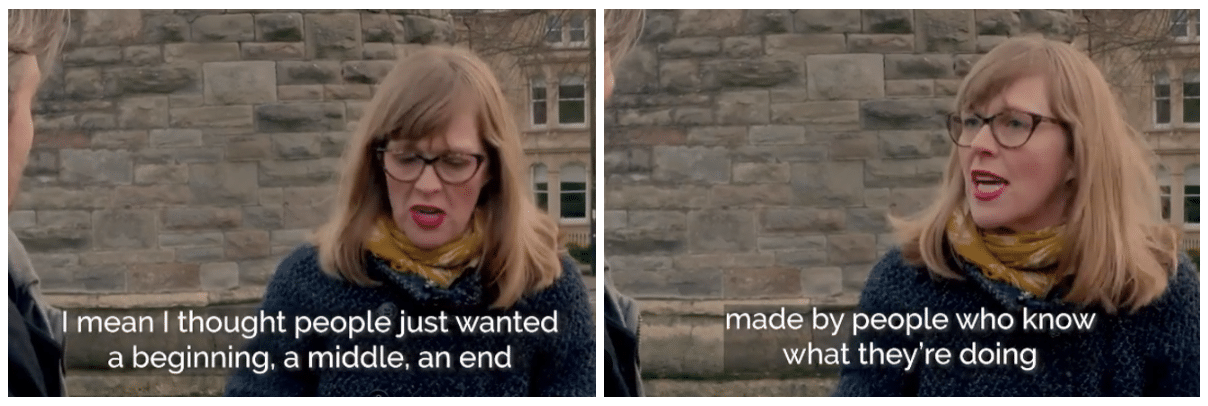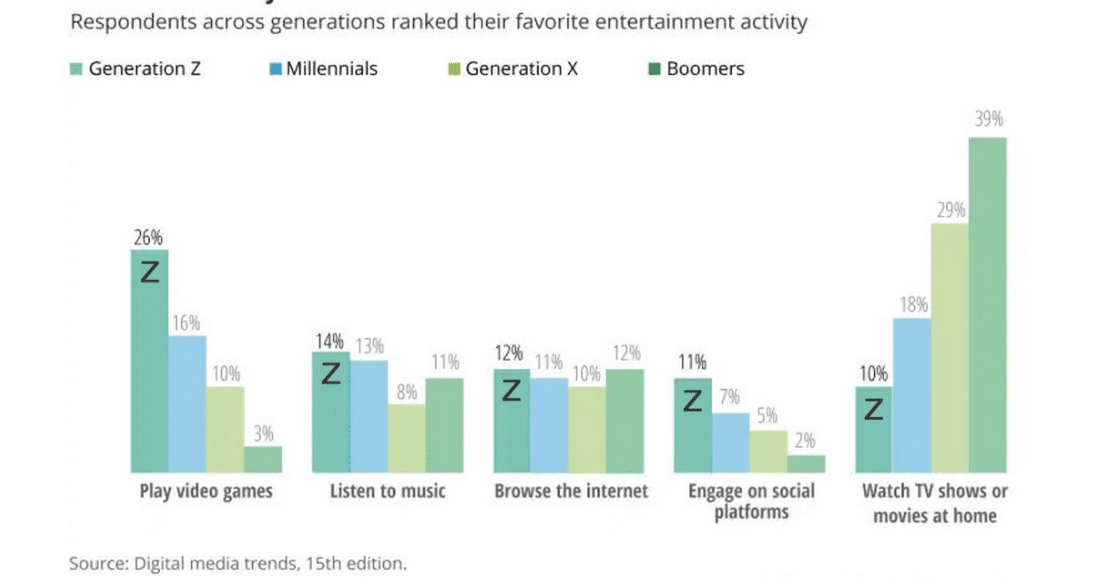by Brock Horning | Stornaway.io, Friday 17 March 2023
There were many reasons why the Stornaway team gave a cheer when Everything Everywhere All At Once won the Oscar for Best Picture. And it wasn’t just because we all loved the film!
Everything Everywhere All At Once’s (abbreviated to EEAAO from now) Oscar triumphs were historic for a number of reasons, not least for Asian American representation in cinema. However, for us, it also proved that the way people want to consume media and stories is changing. Audiences want to be immersed in and be a part of the story.
From ‘closed thinking’ to ‘optional thinking’
One of the key challenges facing interactive storytellers is the ongoing assumption that audiences only want linear narratives.

Traditional Hollywood storytelling follows familiar and often predictable linear narratives. The argument goes that audiences want the safety within that familiarity. Knowing Will and Anna will get together by the end of Notting Hill, whatever obstacles occur, is part of the enjoyment. The certainty of a safe and happy ending is a positive contrast with the incomplete and uncertain nature of our own lives.
Film scholar Nitzan Ben Shaul holds a dim view of this format. These movies, he says, “cue the viewer to expect predictable outcomes and adopt a closed state of mind.” He goes on to suggest that reducing alternate perspectives or scenarios can lead to the everyday acceptance of inadequate or incorrect theories or hypotheses, resulting in dire consequences. The continued global problems with misinformation would suggest he is on the money.
But what of the films expanding our sense of what’s possible? Multiverse movies definitely exist in various forms – from Christmas classic It’s a Wonderful Life to rom-com Sliding Doors and sci-fi thrillers including Inception. These films present what Shaul calls ‘optional thinking’.
Optional thinking includes a range of narrative design features that encourage open thinking. It could mean asking: ‘what if the main character had done something differently?’ (Groundhog Day). Or, ‘what if there was another perspective on this event?’ (Rashomon). Or even ‘what if that same event had happened to a different person in a different place?’ (Spiderman: Into the Spiderverse). All these features open audiences’ mindsets to different possibilities and storylines. Multiverse movies also invite an increased level of interaction, discussion and engagement with the story itself.
And not only are audiences increasingly enjoying this style of viewing experience, there is now (particularly with younger audiences) a level of expectation for interaction.
Cultural shifts are changing media consumption expectations
There can be no doubt that gaming is on the rise. And this is impacting how audiences want and expect to consume media. For example, where passive ‘video first’ has been the default preference for past generations, Gen-Z has greater expectations for play and interaction.
For all previous generations, TV has been the #1 entertainment activity. For Gen Z, video games are #1… and TV comes last:

Couple this with the experience that social media apps provide – a constant stream of tiny out-of-order snippets of other people’s lives. The result is an audience who are generally accepting and familiar with non-linear narratives. In fact, there’s the distinct sense that interaction and gamification bring personalisation and empowerment rather than confusion and disjointed experiences.
From a narrative perspective, this creates new challenges for storytellers. As EEAAO directors, the Daniels, explain: “Every screenplay is all about the decisions the characters make and what that tells you about them. Over the course of a film, that’s how you get to be inside the character’s head – through their decisions. But in the multiverse, you introduce the idea that every decision has a universe in which they go one way and another where they go the exact opposite way. Which means there are no right or wrong decisions. So how are you meant to care about them?”
So the real success of EEAAO is that it embraced interactivity and playfulness without losing the emotional impact. The Daniels cleverly centred the story on the relationship between mother and daughter and explored family dynamics to provide the emotive punch. They proved that non-linear narratives could still deliver character-led stories. And this makes them ripe for mainstream acceptance (Hello Academy Award for Best Picture!)
Now sit back lean forward and enjoy
Great filmmakers have always invited a certain level of interaction with their movies. Legendary director Billy Wilder’s rules of screenwriting includes a key tip: “Let the audience add up two plus two. They’ll love you forever.” Your audience will feel closer to films that invite interaction and engagement by giving them the opportunity to connect the dots and ‘build’ some of the narrative in their imaginations. In films like EEAAO or Groundhog Day, this is done by allowing audiences to work out the rules and mechanics of these new worlds for themselves.

And then there are the filmmakers taking the interactive concept literally. FMV games are merging with the silver screen to create a new generation of immersive movies. Sell-out screening of The Gallery, premiering at the London Games Festival at the end of March, show the building awareness and strong appetite for interactive features:
🍿 So proud that ‘The Gallery’ will screen in selected cinemas as part of @londongamesfest between 29 March - 7 April!
— Paul Raschid (@paulraschid) March 16, 2023
Come experience an interactive cinema screening!
🎟 Tickets: https://t.co/BOoleEogRz
Venues:@GenesisCinema@ThePCCLondon @ealing_project @Phoenixcinema pic.twitter.com/FM4R2BhKUW
The acceptance of gamified, non-linear storytelling has exciting implications for every industry, not solely entertainment. Consider a completely different storytelling discipline: training and explainer videos.
A study by Kaltura revealed that 72% of people don’t give linear training videos their full attention. However, interactive video is 81% more effective at keeping their attention. Not only that, different audiences can choose the information most relevant to them. No one’s time is wasted – a win-win!
Just like the multiverse, the opportunities are endless. Ask an expert’s advice, or train staff in soft skills through interactive conversation videos. Take learners of all ages on fantastic journeys of discovery with interactive educational experiences. Allow your audience to get hands-on with the world you’ve created – whether a brand experience or one-off live/hybrid or virtual event.
Conclusion: The way we tell stories is evolving
Everything Everywhere All At Once’s Best Picture Academy Award was a big moment for non-linear storytelling. It was a visible moment of mainstream acceptance for a once-niche narrative device: As new technologies disrupt the tried and tested formulas, audiences are looking for narrative journeys that match their experiences of the world.
The real lesson from Everything Everywhere All At Once is that it’s time to bring your audience into your story on their terms.
